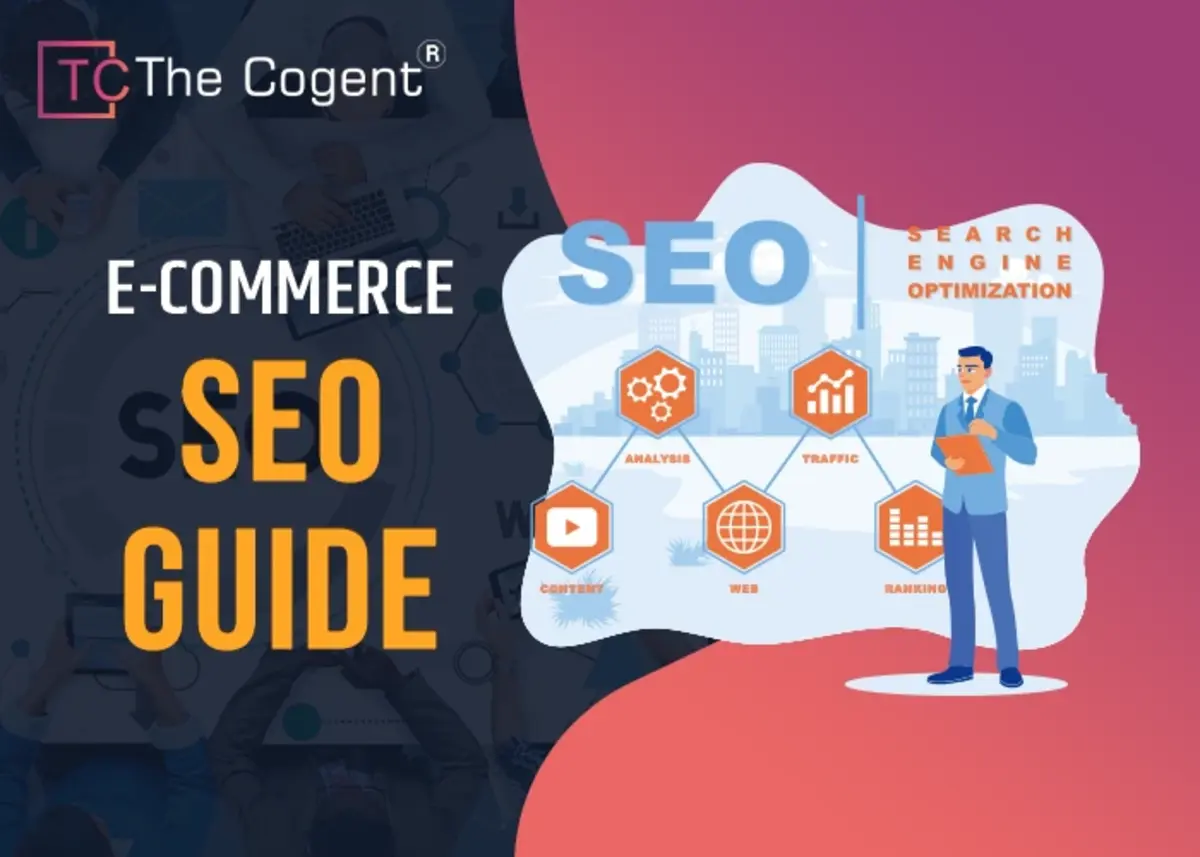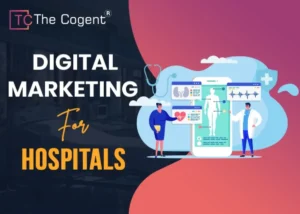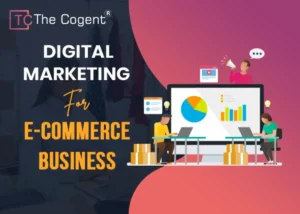Ecommerce SEO (Search Engine Optimization) is the practice of optimizing online stores to improve their visibility and rankings in search engine results pages (SERPs). It involves various strategies and techniques aimed at driving organic traffic and increasing conversions for ecommerce websites. Key aspects of ecommerce SEO include keyword research, on-page optimization, site structure and navigation, content creation and optimization, link building, and technical SEO.
SEO for E-commerce: How Does it Work?
The goal of E-commerce SEO is to increase the visibility of your store on search engine results pages (SERPs) in order to get more traffic to your store. The higher your page ranks, the more traffic it will receive.
The benefit of SEO is that it allows you to capture highly relevant traffic at almost no cost, unlike paid ads, which make you pay per click to drive traffic to your website. You are ranked by search engines like Google, Bing, and Yahoo based on how well you optimize your web store for search engines.
Content on your web store is one of the most important factors in improving SEO on your website. By implementing a blog, optimizing product descriptions, or running a technical audit, you can improve your e-commerce SEO.
To rank higher in search engine results pages, you should ensure your website is SEO-friendly.
Here are a few examples of what this looks like:
- Targeting pages with keywords
- Setup of your online store’s technical aspects
- Check if your web store is mobile-friendly
In order for your web pages to rank in SERPs like Google, all of these factors have an impact on your ecommerce SEO. The Digital marketing company in Jaipur uses ecommerce SEO for growth in sales.
Why SEO is Important for Ecommerce Websites
SEO (Search Engine Optimization) is crucial for ecommerce websites for several reasons:
- Increased Organic Traffic: SEO helps improve the visibility of your ecommerce website in search engine results pages (SERPs). By optimizing your website for relevant keywords and search queries, you have a better chance of ranking higher in search results, leading to increased organic traffic.
- Targeted Traffic: Effective SEO techniques allow you to target specific keywords and phrases relevant to your ecommerce business. This helps attract highly targeted traffic, consisting of people actively searching for the products or services you offer.
- Improved User Experience: SEO involves optimizing various aspects of your website, such as site structure, navigation, page load speed, and mobile responsiveness. These optimizations not only help search engines understand and index your site better but also improve the overall user experience.
- Enhanced Brand Visibility: SEO can significantly boost your ecommerce website’s brand visibility. When your website appears on the first page of search results for relevant keywords, it increases brand exposure and credibility.
- Competitive Advantage: In the highly competitive ecommerce industry, SEO can give you an edge over your competitors. By implementing effective SEO strategies, you can outrank competing websites and appear above them in search results.
- Long-Term Results: SEO is a long-term strategy that can provide ongoing benefits for your ecommerce website. Unlike paid advertising, where traffic stops once you stop paying, SEO efforts can continue to drive organic traffic and visibility over time.
What is the Difference Between SEO for B2B E-commerce Vs SEO for B2C E-commerce?
There are distinct differences between SEO in business-to-business (B2B) e-commerce, and SEO in business-to-consumer (B2C) e-commerce.
- Target Audience:Businesses and professionals who prioritize practical aspects and seek tailor-made solutions are the target audience for B2B e-commerce. For them:
- “Discover Effective Solutions for Your Business Needs”
- “Powerful Tools and Services Tailored for Professionals”
E-commerce aimed at individuals focused on their interests and preferences is referred to as B2C e-commerce. For them:
- “Find the Perfect Product to Enhance Your Everyday Life”
- “Unlock a World of Possibilities with Our Diverse Selection”
- Longer Buying Cycle:The B2B e-commerce buying cycle involves multiple decision-makers and a longer timeframe. The following tips will help you address concerns, provide in-depth information, and establish credibility. For example:
- “Comprehensive Guides to Help You Make Informed Business Decisions”
- “Partner with the Industry Leaders for Long-term Success”
The buying cycle for B2C e-commerce is typically shorter, so purchase decisions need to be made quickly. Ensure that shopping is convenient and easy:
- “Quick and Easy Shopping Experience with Fast Shipping”
- “Discover Trendy Products That Suit Your Style”
- Goal:The goal of B2B e-commerce is to generate leads, establish relationships, and nurture long-term customers. Consider the following content:
- “Unlock Opportunities for Growth and Success”
- “Get a Free Consultation to Tailor Solutions to Your Business”
E-commerce aimed at B2C customers is focused on generating immediate sales and cultivating customer loyalty. Highlight the benefits and incentives in your content:
- “Shop Now and Enjoy Exclusive Discounts”
- “Join Our Loyalty Program for Amazing Benefits”
- KPIs (Key Performance Indicators):Analyze lead generation, conversion rates, customer retention, and average deal size for B2B e-commerce. Ensure customer satisfaction and conversion rates are being monitored in B2C e-commerce.
Ecommerce Keyword Research
Keyword research is an essential step in optimizing your ecommerce website for search engines and driving targeted traffic to your online store. By identifying the right keywords, you can improve your website’s visibility and attract potential customers who are actively searching for the products or services you offer.
Here’s a step-by-step guide on conducting ecommerce keyword research, in Digital Marketing for E-commerce the first step in keyword research
Brainstorm Relevant Topics:
Start by brainstorming a list of relevant topics related to your ecommerce niche. Think about the products you sell, the categories they belong to, and any specific features or benefits they offer. This step helps you generate a broad list of ideas to work with.
Expand Your List with Seed Keywords:
Take each of the topics from the previous step and generate a list of seed keywords. These are the basic keywords that describe your products or services. For example, if you sell hiking gear, seed keywords could include “hiking boots,” “camping tent,” “backpack,” and so on.
Conduct Keyword Research:
Use keyword research tools to expand your seed keywords and identify related keywords with high search volume and relevance. Tools like Google Keyword Planner, SEMrush, Ahrefs, or Moz Keyword Explorer can help you discover new keyword ideas, analyze search volume, and competition levels.
Analyze Keyword Metrics:
Once you have a list of potential keywords, analyze their metrics to determine their viability. Look for keywords with a good search volume (number of searches per month), lower competition (so you have a chance to rank for them), and relevance to your products or services.
How To Find Keywords For Ecommerce Product and Category Pages
Finding keywords for ecommerce product and category pages follows a similar process to general keyword research, with a focus on product-specific terms and category-related keywords. According to PPC company in Jaipur the relevant keywords helps to connect with target audience Here’s a step-by-step guide to help you find keywords for your ecommerce product and category pages:
- Identify Product Features and Benefits: Start by understanding your products and their unique features. Make a list of the key features, benefits, and attributes of each product. Consider what sets your products apart from competitors and what customers might search for when looking for similar items.
- Use Seed Keywords: Begin with a list of seed keywords that are directly related to your products and categories. These are basic terms that describe what you offer. For example, if you sell smartphones, seed keywords could include “iPhone,” “Android phone,” “Samsung Galaxy,” and so on. Think about the specific models, brands, or variations within your product range.
- Conduct Keyword Research: Utilize keyword research tools such as Google Keyword Planner, SEMrush, Ahrefs, or Moz Keyword Explorer to expand your list of seed keywords. Enter your seed keywords into the tools and explore the suggestions they provide. Look for keywords with decent search volume and relevance to your products.
Amazon Suggest – With Examples
Amazon Suggest, also known as Amazon Autocomplete, is a feature on the Amazon platform that provides predictive search suggestions to users as they type in the search bar. It helps users find relevant products quickly and easily by offering suggestions based on popular search terms and previous user behavior.
Here are some examples to illustrate how Amazon Suggest works:
- Example: When a user starts typing “iPhone,” Amazon Suggest may provide suggestions such as:
“iPhone 12 Pro Max”, “iPhone 11”, “iPhone charger cable”
- Example: If a user begins typing “yoga mat,” Amazon Suggest could suggest:
“yoga mat with carrying strap”
“extra thick yoga mat”
“non-slip yoga mat”
- Example: When a user types “Harry Potter,” Amazon Suggest might suggest:
“Harry Potter book set”, “Harry Potter DVD collection”, “Harry Potter wand”
Keyword Research Tools for E-commerce Website
When it comes to conducting keyword research for an ecommerce website, there are several powerful tools available that can help you identify relevant keywords and optimize your website for search engines. Here are three popular keyword research tools:
Google Keyword Planner: This free tool provided by Google is designed specifically for advertisers but can be useful for ecommerce keyword research as well. It provides data on search volume, competition, and keyword suggestions based on your input.
SEMrush: SEMrush is a comprehensive SEO tool that offers a wide range of features, including keyword research. It provides detailed information about keyword search volume, competition level, and related keywords, and even allows you to analyze competitor websites.
Ahrefs: Ahrefs is another popular SEO tool that offers a robust keyword research feature. It provides keyword search volume, keyword difficulty, and detailed keyword suggestions.
Ecommerce Website Architecture
The architecture of an e-commerce website typically consists of several components that work together to provide a seamless and efficient shopping experience for customers. Here’s a high-level overview of the key components in an e-commerce website architecture:
Client-side components:
- User Interface (UI): The front-end component that users interact with. It includes the website’s design, layout, and user experience.
- Web Browser: The software used by customers to access the website and view its content.
Server-side components:
- Web Server: Handles HTTP requests from clients and delivers the requested web pages or resources. Common web servers include Apache HTTP Server and Nginx.
- Application Server: Executes the business logic of the e-commerce website. It handles tasks such as processing orders, managing inventory, and interacting with databases.
- Database Server: Stores and retrieves data required for the website’s operation, such as customer profiles, product information, and transaction history. Popular choices include MySQL, PostgreSQL, and MongoDB.
Application Layer:
E-commerce Platform: A specialized software platform or framework that provides pre-built functionality for managing online stores. Examples include Magento, Shopify, WooCommerce, and OpenCart. These platforms often include features for product catalog management, shopping cart, checkout process, and payment integration.
Content Management System (CMS): Manages the creation, modification, and publishing of website content. It allows non-technical users to manage product listings, blog posts, and other site content. Examples include WordPress, Drupal, and Joomla.
Payment Gateway: Handles the secure processing of online transactions. It facilitates communication between the e-commerce website, the customer, and the financial institutions involved. Popular payment gateways include PayPal, Stripe, and Braintree.
On-Page SEO for Ecommerce Sites
Here are some key on-page SEO factors to consider for e-commerce websites:
- Keyword Research: Identify relevant keywords that potential customers may use to search for products or services you offer. Use keyword research tools to find popular and less competitive keywords. Incorporate these keywords strategically into your page titles, headings, product descriptions, and URLs.
- Page Titles: Create unique and descriptive page titles that accurately represent the content of each page. Include relevant keywords and keep the title tag length within the recommended limit (usually around 50-60 characters) to ensure it displays properly in search results.
- Meta Descriptions: Write compelling meta descriptions for each page, summarizing the content and encouraging users to click. Although meta descriptions don’t directly impact rankings, they can influence click-through rates.
Technical SEO for Ecommerce
Here are some key technical SEO considerations for e-commerce sites:
Site Speed: Ensure your website loads quickly on both desktop and mobile devices. Optimize images, use caching techniques, minify CSS and JavaScript files, and consider utilizing a content delivery network (CDN) to improve page load times.
Mobile-Friendly Design: With the increasing use of mobile devices, it’s crucial to have a responsive design that provides a seamless user experience across different screen sizes. Implement a mobile-friendly design to improve usability and cater to mobile users.
XML Sitemaps: Create and submit XML sitemaps to search engines. This helps search engines discover and index your web pages more efficiently. Include important pages such as product listings, category pages, and key landing pages in your sitemap.
Content Marketing for Ecommerce Sites
- Understand your ideal customers, their demographics, interests, and pain points.
- Determine what you want to achieve with your content marketing efforts.
- Set specific, measurable goals to guide your strategy.
- Create a content calendar outlining the types of content you’ll produce, topics to cover, and a schedule for publishing.
- Identify relevant keywords and phrases related to your products, industry, and target audience.
- Incorporate these keywords naturally into your content to improve search engine visibility and attract organic traffic.
Ecommerce Link Building
Here are some effective strategies for ecommerce link-building:
Create compelling content: Develop high-quality, informative, and shareable content that naturally attracts links. This can include blog posts, product guides, industry reports, infographics, and videos.
Guest blogging: Write guest posts for reputable blogs and websites in your industry. Include links back to relevant pages on your ecommerce site within the content or author bio.
Influencer collaborations: Partner with influencers or bloggers in your niche to promote your products or content.
What are the challenges of E-commerce SEO?
To achieve optimal results, e-commerce SEO challenges need to be addressed.
- Lack of quality content:
The quality of your ecommerce SEO can be hindered by low-quality or inadequate content. In order to provide valuable and engaging content, it must align with user intent and address their needs.
- Forgetting about the technical setup:
The technical SEO elements play a crucial role in improving the visibility and performance of a website. E-commerce SEO can be negatively affected if technical aspects such as page speed, crawling, and mobile optimization are neglected.
Read More about What is Digital Marketing?
Conclusion
This guide provides a detailed overview of ecommerce SEO, including the key aspects of SEO for ecommerce websites, the benefits of SEO, and the best SEO techniques to implement for your ecommerce website.
Implementing effective SEO strategies is essential for the success of an ecommerce website. By optimizing your site for search engines, you can improve its visibility, attract organic traffic, and increase conversions.



